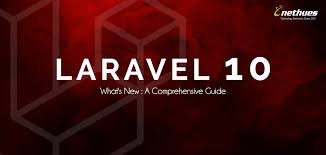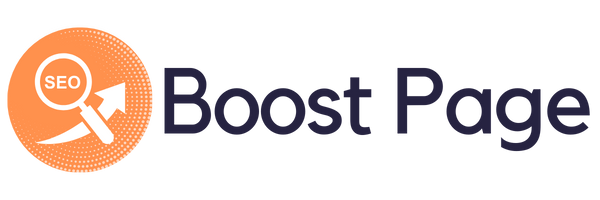
Laravel is a modern, open-source PHP framework designed to simplify web application development. Built with the aim of making common tasks easier, Laravel offers developers tools to work with routing, authentication, sessions, and caching. Since its release in 2011 by Taylor Otwell, it has gained widespread adoption due to its elegant syntax and developer-friendly features. The framework follows the Model-View-Controller (MVC) architectural pattern, ensuring a clean separation between business logic and presentation. Laravel is particularly known for its expressive query builder, Blade templating engine, and powerful ORM called Eloquent. These features help developers build robust applications faster while maintaining code readability. Today, Laravel is widely used in both small projects and large enterprise applications, making it one of the most popular PHP frameworks globally. Its active community ensures constant updates, security patches, and the introduction of innovative features, keeping Laravel relevant in the rapidly changing web development landscape.
History and Evolution of Laravel
Laravel was first introduced in June 2011 as a solution to address limitations in existing PHP frameworks. In its early versions, Laravel provided basic features like routing and templating. However, with Laravel 3 in 2012, the framework introduced the command-line tool Artisan, paving the way for automation in development tasks. Laravel 4, released in 2013, was a complete rewrite using Composer for dependency management, making it more modular and scalable. Laravel 5 series introduced features like middleware, form requests, and improved directory structure, enhancing maintainability. Laravel 6 brought semantic versioning and long-term support releases, making it suitable for enterprise use. Over time, Laravel expanded its ecosystem with tools like Laravel Forge, Envoyer, Vapor, and Nova, enabling seamless deployment, server management, and administration. Today, Laravel continues to evolve with regular updates, ensuring compatibility with the latest versions of PHP and offering advanced features like job batching, improved queues, and real-time event broadcasting.
Key Features of Laravel
Laravel is packed with features that make development faster, more secure, and more organized. Some of its most notable features include:
- Eloquent ORM: Simplifies database interactions using an expressive syntax.
- Blade Templating Engine: Allows developers to use simple, readable templates with minimal overhead.
- Routing System: Provides a clean, expressive syntax for defining web routes.
- Authentication & Authorization: Built-in support for user authentication and role-based access.
- Artisan CLI: Automates repetitive tasks like migrations, seeding, and code generation.
- Task Scheduling: Allows running scheduled tasks without external tools.
- Testing Support: Offers robust tools for unit and feature testing.
These features not only boost productivity but also ensure that applications are built with security and scalability in mind. Laravel’s attention to developer experience makes it one of the most user-friendly frameworks available.
Benefits of Using Laravel
Laravel provides several advantages for developers and businesses alike. First, its MVC architecture ensures clean code separation, making applications easier to maintain and scale. The built-in security features like CSRF protection, password hashing, and SQL injection prevention safeguard applications from common vulnerabilities. Laravel’s community-driven ecosystem means there are abundant packages, tutorials, and resources available, reducing development time. The framework also supports modern development practices like RESTful API creation, real-time event broadcasting, and automated testing. For businesses, Laravel’s efficiency translates into faster time-to-market, reduced development costs, and long-term maintainability. Additionally, Laravel integrates seamlessly with popular front-end frameworks like Vue.js, React, and Angular, making it suitable for full-stack development.
Laravel Architecture and MVC Pattern
Laravel follows the MVC (Model-View-Controller) design pattern, which separates the application logic into three interconnected components:
- Model: Handles data and business logic.
- View: Manages the presentation layer.
- Controller: Acts as a bridge between the Model and View, processing user input.
This separation enhances code organization, making it easier to test, debug, and maintain applications. Laravel’s architecture also supports service providers, middleware, and dependency injection, which further enhance application flexibility. By adhering to MVC principles, Laravel ensures that large-scale projects remain manageable and that developers can work collaboratively without code conflicts.
Laravel Ecosystem and Tools
Laravel’s ecosystem extends beyond the core framework, offering a range of tools that simplify deployment, hosting, and management:
- Laravel Forge: A server management tool for deploying PHP applications.
- Laravel Envoyer: A zero-downtime deployment service.
- Laravel Vapor: A serverless deployment platform powered by AWS.
- Laravel Nova: An admin panel generator for managing application data.
These tools integrate seamlessly, allowing developers to focus more on building features rather than managing infrastructure. This ecosystem is one of Laravel’s biggest strengths, making it a comprehensive solution for modern web development.
Laravel Security Features
Security is a major focus for Laravel. It includes:
- CSRF Protection: Prevents cross-site request forgery attacks.
- Password Hashing: Uses bcrypt or Argon2 to store passwords securely.
- SQL Injection Prevention: Automatically escapes query inputs.
- Authentication & Authorization: Built-in guards and policies for access control.
By integrating these features, Laravel helps developers create secure applications without relying solely on third-party packages. Its security practices align with industry standards, making it suitable for projects that require high levels of data protection.
Laravel Testing and Debugging
Laravel offers extensive support for testing through PHPUnit integration. Developers can write unit tests to check individual components and feature tests to simulate user interactions. Laravel’s testing helpers simplify tasks like HTTP requests and database assertions. Debugging is supported by tools like Laravel Telescope and the built-in error handler, which provide detailed stack traces and logs. These capabilities ensure that issues are identified and resolved early in the development cycle, leading to more reliable applications.
Future of Laravel
With the rise of modern web technologies, Laravel continues to adapt. Upcoming versions focus on improving performance, developer experience, and integration with cloud-native solutions. As PHP evolves, Laravel updates ensure compatibility and leverage new language features. The active community and ongoing support from its creator guarantee that Laravel will remain a top choice for web developers worldwide.





